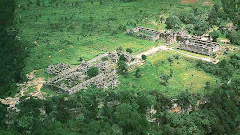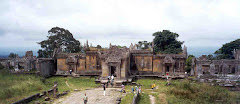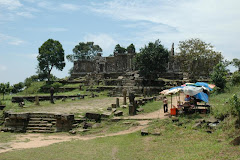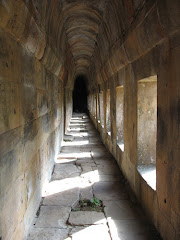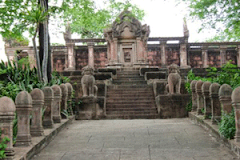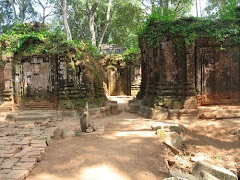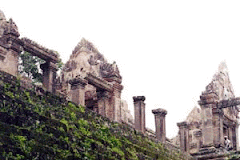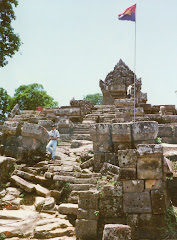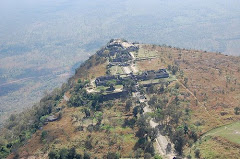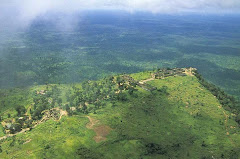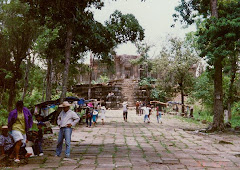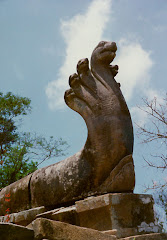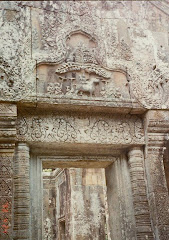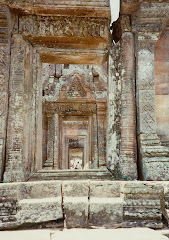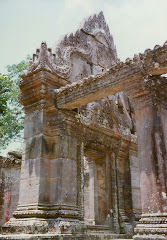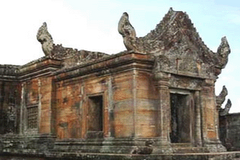
 The Royal Palace in Phnom Penh was constructed over a century ago to serve as the residence of the King of Cambodia, his family and foreign dignitaries, as a venue for the performance of court ceremony and ritual and as a symbol of the Kingdom. It serves to this day as the Cambodian home of King Norodom Sihamoni and former King Norodom Sihanouk. The Royal Palace complex and attached 'Silver Pagoda' compound consist of several buildings, structures and gardens all located within 500x800 meter walled grounds overlooking a riverfront park.
The Royal Palace in Phnom Penh was constructed over a century ago to serve as the residence of the King of Cambodia, his family and foreign dignitaries, as a venue for the performance of court ceremony and ritual and as a symbol of the Kingdom. It serves to this day as the Cambodian home of King Norodom Sihamoni and former King Norodom Sihanouk. The Royal Palace complex and attached 'Silver Pagoda' compound consist of several buildings, structures and gardens all located within 500x800 meter walled grounds overlooking a riverfront park.  Marking the approach to the Palace, the high sculpted wall and golden spired Chanchhaya Pavilion stand distinctively against the riverfront skyline. Inside the Palace grounds, street sounds are silenced by the high walls and the various Royal buildings sit like ornate islands rising from the tranquil, manicured tropical gardens. Except for the area of the actual Royal residence, the Khemarin Palace, most of the Palace grounds and Silver Pagoda are open to the public. Enter from the gate on Sothearos Blvd about 100 meters north of Street 240. Guide pamphlets and tour guides are available near the admission booth. Guided tours are recommended. Multi-lingual tour guides available. Admission: $3.00/person, $2.00/camera, $5.00/video camera. Open everyday, 7:30-11:00 / 2:00-5:00. The Palace grounds are closed during official functions.
Marking the approach to the Palace, the high sculpted wall and golden spired Chanchhaya Pavilion stand distinctively against the riverfront skyline. Inside the Palace grounds, street sounds are silenced by the high walls and the various Royal buildings sit like ornate islands rising from the tranquil, manicured tropical gardens. Except for the area of the actual Royal residence, the Khemarin Palace, most of the Palace grounds and Silver Pagoda are open to the public. Enter from the gate on Sothearos Blvd about 100 meters north of Street 240. Guide pamphlets and tour guides are available near the admission booth. Guided tours are recommended. Multi-lingual tour guides available. Admission: $3.00/person, $2.00/camera, $5.00/video camera. Open everyday, 7:30-11:00 / 2:00-5:00. The Palace grounds are closed during official functions.Points of interest indide the palace include:
-Chan Chhaya: The hall where Royal Dance performers train. In front of the Chan Chhaya, there is a platform where the king can hold audiences with his subjects and all levels ot the officails.
-Prasat Tevea Vinichhay ( The throne hall ) the hall where the kings and Queens are crowned.
-Prasat Khemarin: The hall where the monarchs live.
-Hor Samran Phirum: The hall where the monarchs ride the Royal Elephent
-Hor Samrith Phimean-Damnak Chan-Silver Pagoda
-Other Structures
Chan chhaya
The Preah Thineang Chan Chhaya ("Moonlight Pavilion"), is an open-air pavilion that serves as stage for Khmer classical dance in the past and present. It is one of the most notable buildings of the palace as it easily seen from the outside as it was built alongside a section of the palace walls. The Chan Chhaya Pavilion has a balcony that was used as a platform for viewing parades marching along Sothearos Boulevard of Phnom Penh.
Prasat Tevea Vinichay
 Throne Hall The Throne Hall, the Preah Timeang Tevea Vinicchay, is the primary audience hall of the King, used for coronations and diplomatic and other official meetings. This Throne Hall is the second to be built on this site. The first was constructed of wood in 1869-1870 under King Norodom. That Throne Hall was demolished in 1915. The present building was constructed in 1917 and inaugurated by King Sisowath in 1919. The building is 30x60 meters and topped by a 59-meter spire. As with all buildings and structure at the Palace, the Throne Hall faces east and is best photographed in the morning. When visiting note the thrones (Reach Balaing in front and Preah Tineang Bossobok higher at the back) and the beautiful ceiling frescoes of the Reamker.
Throne Hall The Throne Hall, the Preah Timeang Tevea Vinicchay, is the primary audience hall of the King, used for coronations and diplomatic and other official meetings. This Throne Hall is the second to be built on this site. The first was constructed of wood in 1869-1870 under King Norodom. That Throne Hall was demolished in 1915. The present building was constructed in 1917 and inaugurated by King Sisowath in 1919. The building is 30x60 meters and topped by a 59-meter spire. As with all buildings and structure at the Palace, the Throne Hall faces east and is best photographed in the morning. When visiting note the thrones (Reach Balaing in front and Preah Tineang Bossobok higher at the back) and the beautiful ceiling frescoes of the Reamker.
Prasat Khemarin
 The Khemarin Palace is the common English name for a building called Prasat Khemarin [Prasat (temple or palace) Khmer + Indra] or in Khmer meaning the "Palace of the Khmer King." It is used a residence by the King of Cambodia. This compound is separated from other buildings by a small wall and is located to the right of the Throne Hall. The main building is topped with a single spired prang.
The Khemarin Palace is the common English name for a building called Prasat Khemarin [Prasat (temple or palace) Khmer + Indra] or in Khmer meaning the "Palace of the Khmer King." It is used a residence by the King of Cambodia. This compound is separated from other buildings by a small wall and is located to the right of the Throne Hall. The main building is topped with a single spired prang.Hor Samran Phirum

Hor Samrith Phimean
 Hor Samrith Phimean Also know as the ‘Bronze Palace.’ Repository for the Royal regalia and attributes. Constructed in 1917. Currently housing a display of royal regalia and costumes on the ground floor.
Hor Samrith Phimean Also know as the ‘Bronze Palace.’ Repository for the Royal regalia and attributes. Constructed in 1917. Currently housing a display of royal regalia and costumes on the ground floor.
Damnak Chan
 Damnak Chan The Damnak Chan currently houses the administrative offices of the Royal Palace. Original constructed in 1953 for the High Council of the Throne, this building has served several purposes over the years including acting as the Ministry of Culture in the 80s and housing the Supreme National Council of Cambodia from 1991-93. Damnak Chan displays a somewhat uncomfortable mix of Khmer and Western architectural styles, the mix being particularly apparent in this building - sporting a distinctly Khmer-style roof and a Western style in the main body of the building. Closed to the public.
Damnak Chan The Damnak Chan currently houses the administrative offices of the Royal Palace. Original constructed in 1953 for the High Council of the Throne, this building has served several purposes over the years including acting as the Ministry of Culture in the 80s and housing the Supreme National Council of Cambodia from 1991-93. Damnak Chan displays a somewhat uncomfortable mix of Khmer and Western architectural styles, the mix being particularly apparent in this building - sporting a distinctly Khmer-style roof and a Western style in the main body of the building. Closed to the public.  At first glance the Napoleon III Pavilion seems almost out-of-place, sitting like a European-style dollhouse amongst the imposing and distinctly Khmer-style buildings that surround it. The Pavilion was in fact the first permanent structure on the site of the Royal Palace. It was originally built for Empress Eugenie of France, wife of Napoleon III, in 1869 for use in the inauguration of the Suez Canal. It is constructed entirely of iron. In 1876 Emperor Napoleon III made a gift of the building to King Norodom of Cambodia. By fortunate happenstance, the royal emblem "N" emblazed on the doors and other parts of the building to honor the name of 'Napoleon' did not need to be altered when the pavilion was transferred to King Norodom. The Pavilion was refurbished in 1991 with financial assistance from the French government. The Pavilion now serves as a small museum housing Royal memorabilia and a photographic exhibition. Best photographed in the morning. (Damnak Chan pictured in the background.)
At first glance the Napoleon III Pavilion seems almost out-of-place, sitting like a European-style dollhouse amongst the imposing and distinctly Khmer-style buildings that surround it. The Pavilion was in fact the first permanent structure on the site of the Royal Palace. It was originally built for Empress Eugenie of France, wife of Napoleon III, in 1869 for use in the inauguration of the Suez Canal. It is constructed entirely of iron. In 1876 Emperor Napoleon III made a gift of the building to King Norodom of Cambodia. By fortunate happenstance, the royal emblem "N" emblazed on the doors and other parts of the building to honor the name of 'Napoleon' did not need to be altered when the pavilion was transferred to King Norodom. The Pavilion was refurbished in 1991 with financial assistance from the French government. The Pavilion now serves as a small museum housing Royal memorabilia and a photographic exhibition. Best photographed in the morning. (Damnak Chan pictured in the background.) Silver Pagoda
 The 'Silver Pagoda' sits next to the Royal Palace, separated by a walled walkway, but within the same larger walled compound. The Silver Pagoda's proper name is Wat Preah Keo Morokat, which means 'The Temple of the Emerald Buddha,' but has received the common moniker 'Silver Pagoda' after the solid silver floor tiles that adorn the temple building. The pagoda compound as a whole contains several structures and gardens, the primary building being the temple Wat Preah Keo Morokat and other structures including a library, various stupas, shrines, monuments, minor buildings and the galleries of the Reamker.
The 'Silver Pagoda' sits next to the Royal Palace, separated by a walled walkway, but within the same larger walled compound. The Silver Pagoda's proper name is Wat Preah Keo Morokat, which means 'The Temple of the Emerald Buddha,' but has received the common moniker 'Silver Pagoda' after the solid silver floor tiles that adorn the temple building. The pagoda compound as a whole contains several structures and gardens, the primary building being the temple Wat Preah Keo Morokat and other structures including a library, various stupas, shrines, monuments, minor buildings and the galleries of the Reamker.
Wat Preah Keo Morokat is unique in several ways. It is the pagoda where the King meets with monks to listen to their sermons and where some Royal ceremonies are performed. It houses a collection of priceless Buddhist and historical objects including the 'Emerald Buddha.' And, unlike most pagodas, no monks live at the pagoda. The temple building, library and Reamker galleries were first constructed between 1892 and 1902 under King Norodom. The equestrian statue of King Norodom was set in place in 1892. Other structures such as the stupas of King Ang Doung Stupa King Norodom (1908), the Kantha Bopha memorial sanctuary (1960) and others were added later. The temple received major reconstruction in 1962 and further renovations 1985-1987, particularly to the Reamker fresco murals. Many of the temple treasures were looted during by the Khmer Rouge 1975-1979, but fortunately the Khmer Rouge chose to keep much of the collection intact for propaganda purposes.
Keong Preah Bath
 Keung Preah Bat houses the footprints of the four Buddhas who have already reached enlightenment. Those Buddhas are Kok Santhor, Neak Komono, Kasabor and Samanakodom. In addition to the four Buddhas who have reached enlightenment, there is one Buddha, Preah Srei Arayametrey, whom Buddhists believe not yet been born. They believe that he will come 5.000 years after the fourth Buddha reaches Nirvana. Buddhists believe that Preah Srei Araymetrey will come and help the people.
Keung Preah Bat houses the footprints of the four Buddhas who have already reached enlightenment. Those Buddhas are Kok Santhor, Neak Komono, Kasabor and Samanakodom. In addition to the four Buddhas who have reached enlightenment, there is one Buddha, Preah Srei Arayametrey, whom Buddhists believe not yet been born. They believe that he will come 5.000 years after the fourth Buddha reaches Nirvana. Buddhists believe that Preah Srei Araymetrey will come and help the people.
Library

Library Small library next to the main vihear that houses sacred Buddhist texts (Buddha's Tripitaka, i.e. "Three Baskets") and also contains an image of a sacred bull named Nandin, and several Buddha statues. The Nandin statue is metal (primarily silver) and is said to be of ancient origin. The statue was found in Kandal province in 1983. Fortune tellers work inside the shrine. If you can find somebody to translate for you, you can have your future told for a small contribution.
Phnom Mondop

Phnom Mondop is a small artificial hill symbolizing Mount Kailassa, topped by a shrine containing a large Buddha footprint. The shrine is adorned with 108 Buddha images symbolizing the 108 past lives of Buddha. Fortune tellers work inside the shrine. If you can find somebody to translate for you, you can have your future told for a small contribution.
Statue of HM King Norodom
 Statue of HM King Norodom Equestrian statue of the King Norodom (1834-1904). Completed by French artist Eude in 1875 in Paris and placed on the pagoda grounds in 1892. The canopy was added by King Sihanouk in 1953 to honor King Norodom in light of Cambodia's new independence. The stupa north of the statue contains the ashes of King Norodom.
Statue of HM King Norodom Equestrian statue of the King Norodom (1834-1904). Completed by French artist Eude in 1875 in Paris and placed on the pagoda grounds in 1892. The canopy was added by King Sihanouk in 1953 to honor King Norodom in light of Cambodia's new independence. The stupa north of the statue contains the ashes of King Norodom.
Stupa of HM King Ang Doung

Stupa of HM King Ang Doung Stupa containing the ashes of the King Ang Doung (1845-1860), founder of the current dynasty and the great-great-great grandfather to King Sihamoni. Constructed in 1908.
Stupa of HM King Norodom

Stupa of H M Kin g Norodom Stupa containing the ashes of the King Norodom (1834-1904). Constructed in 1908.
 Stupa of HM King Suramarit and HM Queen Kossomak Stupa of the father and mother of former King Sihanouk (r: 1955-1960), grandfather and grandmother to King Sihamoni.
Stupa of HM King Suramarit and HM Queen Kossomak Stupa of the father and mother of former King Sihanouk (r: 1955-1960), grandfather and grandmother to King Sihamoni.Stupa of Princess Kantha Bopha
 Stupa of Princess Kantha Bopha The memorial sanctuary of the beloved daughter of the former King Sihanouk. Princess Kantha Bopha passed in 1952 at the age of four, succumbing to leukemia. The stupa was built in 1960.
Stupa of Princess Kantha Bopha The memorial sanctuary of the beloved daughter of the former King Sihanouk. Princess Kantha Bopha passed in 1952 at the age of four, succumbing to leukemia. The stupa was built in 1960.Independence Monument

The Independence Monument now also serves as a monument to Cambodia’s war dead. It is the site of colorful celebrations and services on holidays such as Independence Day and Constitution Day.
National Museum
 (Street 178 & Street 13, next to the Royal Palace - $3.00 - 8:00-5:00, open everyday).The distinctive rust-red National Museum next to the Royal Palace was dedicated by King Sisowath in 1920. Over 5000 objects are on display including Angkorian era statues, lingas and other artifacts, most notably the legendary statue of the ‘Leper King.’ Though the emphasis is on Angkorian artifacts, there is also a good collection of pieces from later periods, including a special exhibition of post-Angkorian Buddha figures. Visiting the museum after rather than before a trip to the Angkor Archaeological Park in Siem Reap helps lend context to the Angkorian artifacts. Multi-lingual tour guides are available. Souvenirs and books available. Photography is limited. The museum borders Street 178, aka ‘Artist’s Street’ which is lined with local art galleries and souvenir shops.
(Street 178 & Street 13, next to the Royal Palace - $3.00 - 8:00-5:00, open everyday).The distinctive rust-red National Museum next to the Royal Palace was dedicated by King Sisowath in 1920. Over 5000 objects are on display including Angkorian era statues, lingas and other artifacts, most notably the legendary statue of the ‘Leper King.’ Though the emphasis is on Angkorian artifacts, there is also a good collection of pieces from later periods, including a special exhibition of post-Angkorian Buddha figures. Visiting the museum after rather than before a trip to the Angkor Archaeological Park in Siem Reap helps lend context to the Angkorian artifacts. Multi-lingual tour guides are available. Souvenirs and books available. Photography is limited. The museum borders Street 178, aka ‘Artist’s Street’ which is lined with local art galleries and souvenir shops.
The Reyum Gallery on Street 178 is of particular note, exhibiting the works of contemporary Cambodian artists.
Wat Phnom
 (Intersection of Street 96 and Norodom Blvd. - $1/person) A small hill crowned by an active wat (pagoda) marks the legendary founding place of the Phnom Penh. The hill is the site of constant activity, with a steady stream of the faithful trekking to the vihear, shrines and fortune tellers on top, and a constellation of vendors, visitors and motodups at the bottom. Elephant rides available. The legend of the founding of Wat Phnom is tied to the beginnings of Phnom Penh. Legend has it that in 1372 Lady Penh (Yea Penh) fished a floating Koki tree out of the river. Inside the tree were four Buddha statues. She built a hill (‘phnom’ means ‘hill’) and a small temple (wat) at what is now the site of what is now known as Wat Phnom. Later, the surrounding area became known after the hill (Phnom) and its creator (Penh), hence ‘Phnom Penh.’ The current temple was last rebuilt in 1926. The large stupa contains the remains of King Ponhea Yat (1405-1467) who moved the Khmer capital from Angkor to Phnom Penh in 1422. Look for the altar of Lady Penh between the large stupa and the vihear. She is said to be of particular help to women. Wat Phnom is the busiest pagoda in town the night of Chinese/Vietnamese New Year’s Eve.
(Intersection of Street 96 and Norodom Blvd. - $1/person) A small hill crowned by an active wat (pagoda) marks the legendary founding place of the Phnom Penh. The hill is the site of constant activity, with a steady stream of the faithful trekking to the vihear, shrines and fortune tellers on top, and a constellation of vendors, visitors and motodups at the bottom. Elephant rides available. The legend of the founding of Wat Phnom is tied to the beginnings of Phnom Penh. Legend has it that in 1372 Lady Penh (Yea Penh) fished a floating Koki tree out of the river. Inside the tree were four Buddha statues. She built a hill (‘phnom’ means ‘hill’) and a small temple (wat) at what is now the site of what is now known as Wat Phnom. Later, the surrounding area became known after the hill (Phnom) and its creator (Penh), hence ‘Phnom Penh.’ The current temple was last rebuilt in 1926. The large stupa contains the remains of King Ponhea Yat (1405-1467) who moved the Khmer capital from Angkor to Phnom Penh in 1422. Look for the altar of Lady Penh between the large stupa and the vihear. She is said to be of particular help to women. Wat Phnom is the busiest pagoda in town the night of Chinese/Vietnamese New Year’s Eve.
Wat Unaloam
 Wat Unaloam, located near the Royal Palace, is an ideal monastery for tourists to learn about Cambodia's Buddhism. This pagoda serves as the headquarters for one of Cambodia's most revered Buddhist patriarchs. In addition to the pagoda, there is a post-Angkorean stupa at this monastery.
Wat Unaloam, located near the Royal Palace, is an ideal monastery for tourists to learn about Cambodia's Buddhism. This pagoda serves as the headquarters for one of Cambodia's most revered Buddhist patriarchs. In addition to the pagoda, there is a post-Angkorean stupa at this monastery.
The River Front
 Some of Phnom Penh's most important cultural sites as well as dozens of pubs, restaurants and shops sit along the picturesque park-lined riverfront overlooking the Chaktomuk, the confluence of the Tonle Sap, Mekong and Bassac Rivers.
Some of Phnom Penh's most important cultural sites as well as dozens of pubs, restaurants and shops sit along the picturesque park-lined riverfront overlooking the Chaktomuk, the confluence of the Tonle Sap, Mekong and Bassac Rivers.
The Royal Palace, the Silver Pagoda and the National Museum are clustered together between Street 178 and 240 and restaurants and pubs line the riverfront road Sisowath Quay, stretching north from the Royal Palace area all the way to Street 104 near Wat Phnom.

River Cruise
Short river cruises and dinner cruises along the Phnom Penh riverfront are becoming more popular. A short cruise typically takes about 1-1/2 - 2 hours and runs up the Tonle Sap River along the central riverfront area providing a picturesque view of the Royal Palace, National Museum, parks and Phnom Penh skyline, and then across the Tonle Sap and up the Mekong River to view floating fishing villages. (Photography note: Best lighting in the early morning as the low eastern sun illuminates the front of the Palace.) Tourist boats of varying size and quality wait along the riverfront between Street 178 and Street 130 (look for their small riverfront signs) and at the Passenger Port near Street 104.
For a short riverfront cruise, just contact one of the tourist boats. Prices start at about $10/hour. The unique Kanika catamaran is docked opposite Street 136 - a spacious, modern boat offering a 'High-Tea' cruise from 4PM-6PM and dinner from 6PM-9PM. Private parties, charter cruises. Proceeds go to the Seametrey NGO educational and environmental projects.(See Restaurant listings for more.)
Chenla Luxury Boat Restaurant & Bar runs lunch and dinner cruises by reservation on a deluxe river boat.
Central Market (Psah Thmei)
 This unique, art-deco building is a Phnom Penh landmark. Prior to 1935 the area was a swamp/lake that received the run off during the rainy season. The lake was drained and the market constructed in 1935-37. Wet season flooding in the area around the market of the market is a vestige of the old lake. The entrance to the market is lined with souvenir merchants hawking everything from T-shirts and postcards to silver curios and kramas.
This unique, art-deco building is a Phnom Penh landmark. Prior to 1935 the area was a swamp/lake that received the run off during the rainy season. The lake was drained and the market constructed in 1935-37. Wet season flooding in the area around the market of the market is a vestige of the old lake. The entrance to the market is lined with souvenir merchants hawking everything from T-shirts and postcards to silver curios and kramas. 
Russian Market (Psah Toul Tom Poung)
This market is of far less architectural interest but has a larger and more varied selection of souvenirs, curios and silks than the Central Market. Like the Central Market, it has a good selection of silver, gold and jewels, but also carries huge selection of curios, silks, carvings, etc.
The Russian Market offers the largest selection of bootlegged VCDs, DVDs and CDs of all of the traditional markets. Most of the CD vendors are located on the south side near the southeast corner of the market. It’s also a good place to buy fabric for business and casual cloths to take to the tailor. Most of what the visitor might want is in the same general area on the south side but the rest of the market is well worth exploring. Food and drink stands in the middle of the market for hygienically adventurous visitors.
Old Market (Psah Chas)
A truly local market offering goods such as fruits and vegetables, second hand clothes, hardware and religious articles. In the late afternoon food vendors and fruit sellers spread their mats and set up their stalls in and along street 13 in preparation for an evening market. The dinner rush makes for a confusing, pungent, dirty, potentially photogenic scene.
Toul Sleng Genocide Museum (S-21)
 (Corner of Street 113 & Street 350 - $2.00 - Open everyday, including holidays, 8AM-5PM - Closed for lunch) Prior to 1975, Toul Sleng was a high school. When the Khmer Rouge came to power it was converted into the S-21 prison and interrogation facility. Inmates were systematically tortured, sometimes over a period of months, to extract confessions, after which they were executed at the killing fields of Choeung Ek. S-21 processed over 17,000 people, seven of whom survived. The building now serves as a museum, a memorial and a testament to the madness of the Khmer Rouge regime. Much has been left in the state it was when the Khmer Rouge abandoned it in January 1979. The prison kept extensive records, leaving thousands of photos of their victims, many of which are on display. Paintings of torture at the prison by Vann Nath, a survivor of Toul Sleng, are also on display. The museum’s famous and controversial ‘skull map’ is no longer on display.
(Corner of Street 113 & Street 350 - $2.00 - Open everyday, including holidays, 8AM-5PM - Closed for lunch) Prior to 1975, Toul Sleng was a high school. When the Khmer Rouge came to power it was converted into the S-21 prison and interrogation facility. Inmates were systematically tortured, sometimes over a period of months, to extract confessions, after which they were executed at the killing fields of Choeung Ek. S-21 processed over 17,000 people, seven of whom survived. The building now serves as a museum, a memorial and a testament to the madness of the Khmer Rouge regime. Much has been left in the state it was when the Khmer Rouge abandoned it in January 1979. The prison kept extensive records, leaving thousands of photos of their victims, many of which are on display. Paintings of torture at the prison by Vann Nath, a survivor of Toul Sleng, are also on display. The museum’s famous and controversial ‘skull map’ is no longer on display.
Choeung Ek Memorial (The Killing Fields)
 (15 km southwest of Phnom Penh - Take Monireth 8.5 km past the bridge at Street 271) From April 17, 1975 until January 7, 1979, the ultra-Communist Khmer Rouge (i.e. Red Khmer) regime, led by Pol Pot, controlled the whole of Cambodia. Under the Khmer Rouge regime the country was known as ‘Democratic Kampuchea.’ During the short reign of the Khmer Rouge, between one million and two and a half million Cambodians perished, some killed outright, others dying from disease, malnutrition, neglect and mistreatment. Many of the dead ended up in various ‘killing fields’ that can be found scattered across the country. The killing fields were essentially ad hoc places of execution and dumping grounds for dead bodies. The memorial at Choeung Ek just outside Phnom Penh was an orchard and a Chinese cemetery prior to 1975. During the Khmer Rouge regime it became one of the killing fields - this particular killing field is the site of the brutal executions of more than 17,000 men, women and children, most of whom first suffered through interrogation, torture and deprivation in the S-21 Prison (Toul Sleng) in Phnom Penh. Choeung Ek is now a group of mass graves and a memorial stupa containing thousands of skulls. It’s about a 20-40 minute drive from the center of Phnom Penh. There are guides available at the site, and a small souvenir shop. For sake of historical context, combine your trip to Choeung Ek with a visit to Toul Sleng Genocide Museum.
(15 km southwest of Phnom Penh - Take Monireth 8.5 km past the bridge at Street 271) From April 17, 1975 until January 7, 1979, the ultra-Communist Khmer Rouge (i.e. Red Khmer) regime, led by Pol Pot, controlled the whole of Cambodia. Under the Khmer Rouge regime the country was known as ‘Democratic Kampuchea.’ During the short reign of the Khmer Rouge, between one million and two and a half million Cambodians perished, some killed outright, others dying from disease, malnutrition, neglect and mistreatment. Many of the dead ended up in various ‘killing fields’ that can be found scattered across the country. The killing fields were essentially ad hoc places of execution and dumping grounds for dead bodies. The memorial at Choeung Ek just outside Phnom Penh was an orchard and a Chinese cemetery prior to 1975. During the Khmer Rouge regime it became one of the killing fields - this particular killing field is the site of the brutal executions of more than 17,000 men, women and children, most of whom first suffered through interrogation, torture and deprivation in the S-21 Prison (Toul Sleng) in Phnom Penh. Choeung Ek is now a group of mass graves and a memorial stupa containing thousands of skulls. It’s about a 20-40 minute drive from the center of Phnom Penh. There are guides available at the site, and a small souvenir shop. For sake of historical context, combine your trip to Choeung Ek with a visit to Toul Sleng Genocide Museum.
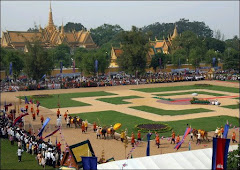

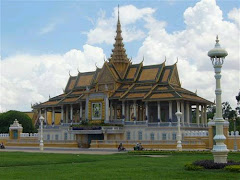

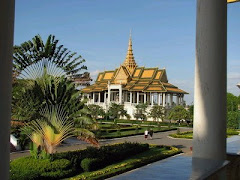
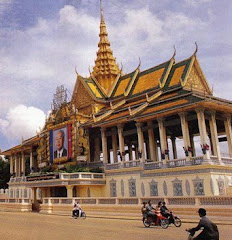
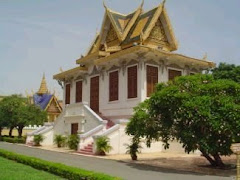
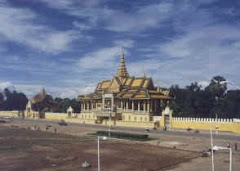
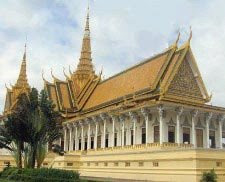

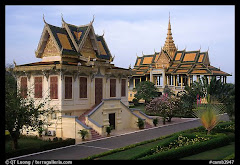





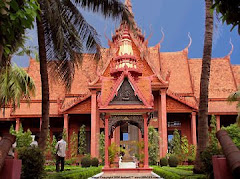
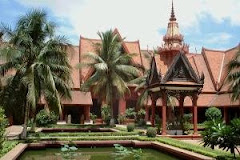




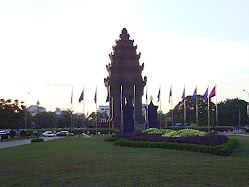



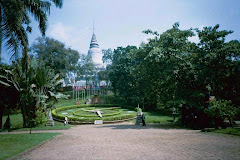

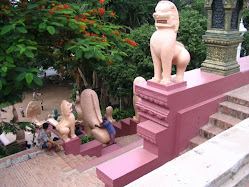
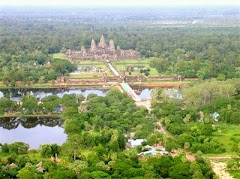
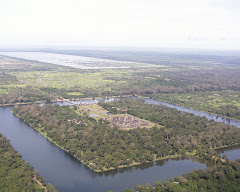

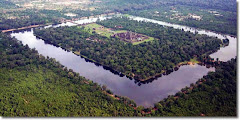
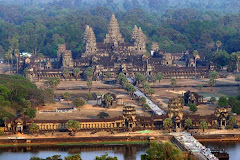
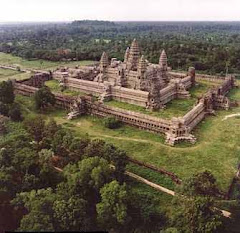
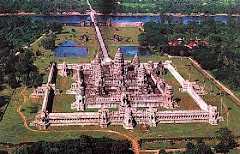
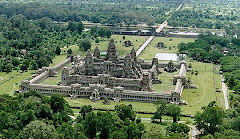
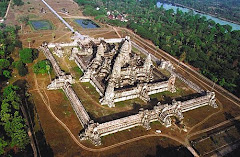

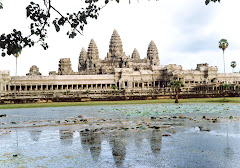

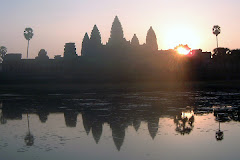
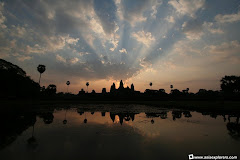
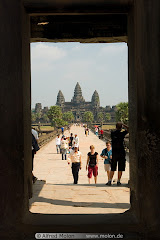
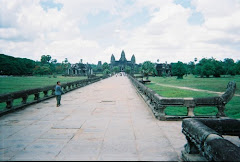
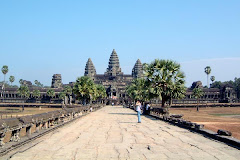
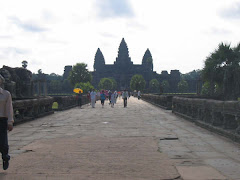
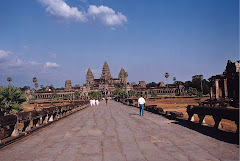
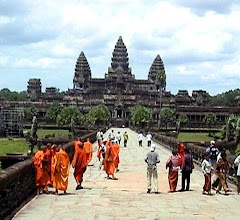
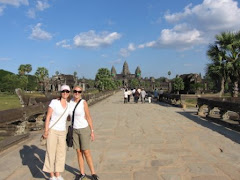
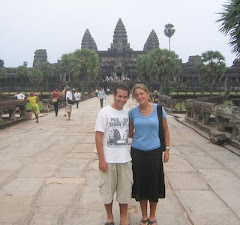
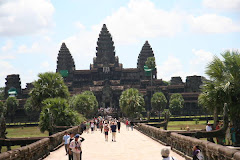
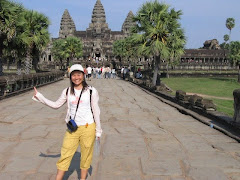
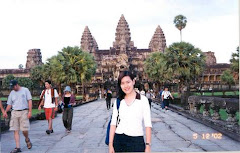

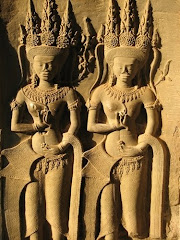

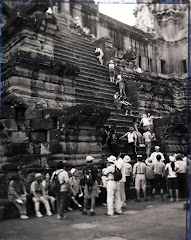

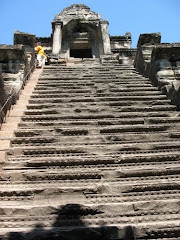

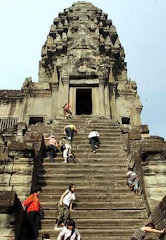
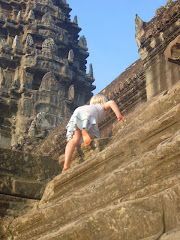
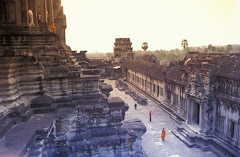
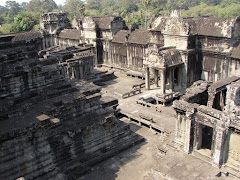
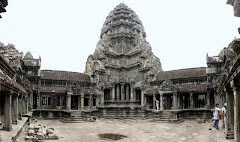
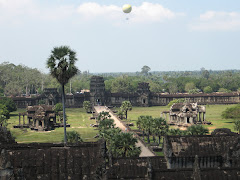


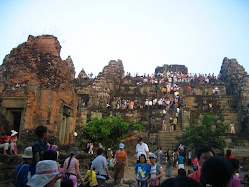

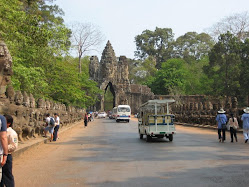

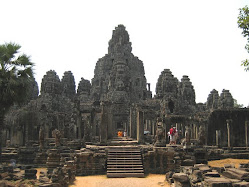
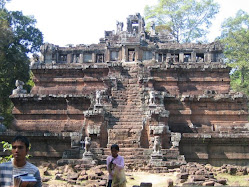.jpg)

